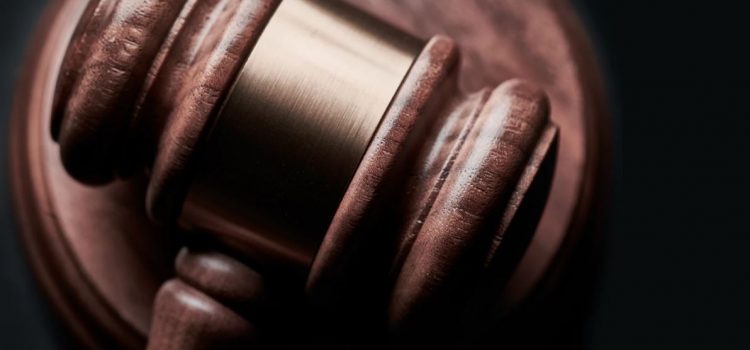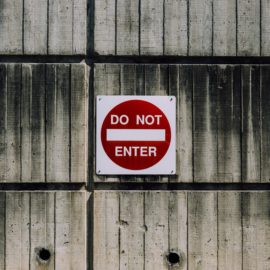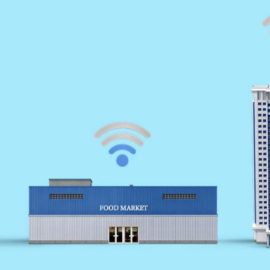

This article is an excerpt from the Shortform book guide to "Biased" by Jennifer L. Eberhardt. Shortform has the world's best summaries and analyses of books you should be reading.
Like this article? Sign up for a free trial here .
What are some examples of racism in the justice system? Are there countermeasures in place to try to stop the incidents of judicial racial bias?
Almost every aspect of the justice system is guilty of racial bias. Racism in the justice system can be found in traffic stops, the cash bail system, plea bargains, sentencing and more. And it’s going to take more than procedural justice training to stop it.
Continue reading to learn what Dr. Jennifer Eberhardt, author of Biased, has to say about racism in the justice system.
Judicial Racism
Violent police interactions don’t happen in a vacuum—they both shape and are shaped by societal context and local perceptions of the police. In this article, we’ll see how the daily realities of police work can increase officers’ racial bias and lead to burnout. Finally, we’ll see how bias creates racial disparities at every level of the criminal justice system, from discretionary stops to cash bail, plea bargains, and death sentences.
Interpreting Data Based on Experience
In her book Biased, Eberhardt frequently works with the Oakland Police Department, which is required to collect data on every police stop as part of a federal settlement. In 2014, the author and her colleagues analyzed the data for a 13-month period (roughly 28,000 stops) and determined that Oakland police disproportionately stopped and searched black people, who made up only 28% of Oakland’s population but accounted for 60% of police stops. Officers were also significantly more likely to conduct searches of black people during a stop (65%) than white people (23%). During those stops, 72% of Oakland officers had handcuffed a black person who was not under arrest, but only 26% had handcuffed a white person without making an arrest. (Shortform note: Stanford University (where Dr. Eberhardt teaches) is home to the Open Policing Project, which has gathered data on over 200 million traffic stops all over the country. Data sets from every city in the project are available on their website for other researchers to download and use in their own analyses. The project is the first to gather comprehensive data on police stops and make that data available to the public.)
The same pattern of data plays out in police departments all over the country and even internationally. From the perspective of an antiracist community leader, that evidence is proof of racial profiling; but from the perspective of a police officer, that evidence is proof that black people are simply more likely to commit crimes in the first place. The statistics may be impartial, but the way people interpret them is not.
| Same Data, Different Narratives The reason these two groups interpret the same numbers so differently has to do with the narrative they impose on the data. In Thinking, Fast and Slow, Daniel Kahneman describes the “narrative fallacy,” which is the human tendency to rearrange data to construct a story that makes sense. In the case of police data, different groups are telling different stories about the same data. For example, police officers’ narratives may rely on the assumption that officers only stop people who have committed a crime (or who they can reasonably suspect to be a criminal). With that narrative in mind, the fact that black people make up the majority of police stops in Oakland naturally means that black people also make up the majority of criminals. However, antiracist activists have a different underlying narrative: They may assume that police stops often happen for reasons that don’t have to do with actual crime (such as bias or ticket quotas). In that case, the fact that black people make up 60% of Oakland police stops but just 28% of the population doesn’t mean there are more black criminals—it means police officers are deciding who to stop based on racial bias. The pre-existing narratives in each group prevent them from seeing other ways of interpreting the same data. |
Procedural Justice Training
Many police departments now use a program called “procedural justice training” to help officers reframe how they see and interact with the community. The goal of procedural justice training is to help officers reconnect to the noble goals that inspired them to join the force in the first place and reduce racism in the justice system. Officers then use that “ideal self” as a compass to guide their interactions with the community, particularly in four central ways: give people a voice, apply the law fairly, treat people with respect, and be trustworthy. When the officers follow these principles, they build respect for the police and a better connection with the community, which ultimately makes their jobs easier and more rewarding.
Procedural justice training is a marked improvement from past officer training programs, which emphasized relying on instinct and trusting “the hairs rising on the back of your neck.” Generations of cops were trained to ignore objective evidence and focus solely on intuition—which is often bias in disguise. Racial bias is ingrained so early and so powerfully that it influences people even when they’re actively trying to avoid it, but police officers are trained to embrace that bias, creating an even more destructive force.
| Procedural Justice Training Didn’t Save George Floyd In 2014, the Department of Justice sponsored the National Initiative for Building Community Trust and Justice, a police reform initiative that included procedural justice training for officers in addition to policy changes. The program debuted in six cities—including Minneapolis, Minnesota. Every officer in the Minneapolis Police Department received 24 hours of procedural justice and implicit bias training. In addition, the MPD hosted eight “listening sessions” with specific community groups, including black Minneapolitans. In 2016, the department committed to a number of policy changes based on the information shared in these sessions, including updating their use-of-force policy to “prioritize sanctity of life” and requiring officers to intervene if another officer is using excessive force. The reform initiatives in Minneapolis ran from 2014 to 2018. Derek Chauvin, the former MPD officer convicted of murder and manslaughter in the death of George Floyd, joined the department in 2001 and presumably received these trainings. Additionally, the three other officers who were on the scene when George Floyd died would have been aware of the department policy that required them to intervene if a fellow officer used excessive force. And yet, no one intervened as Chauvin knelt on Floyd’s neck for over nine minutes, which the department’s longest-serving officer characterized as “totally unnecessary.” If procedural justice training alone can’t prevent instances of police brutality, what can? Activists, policymakers, and academics have proposed a variety of ideas, ranging from minor reforms to abolishing the police completely. One idea that most of these proposals have in common is establishing an unarmed team of social workers and medical professionals to address calls involving mental health crises, domestic disputes, or homelessness. Currently, police officers spend most of their time on nonviolent calls like these despite having relatively little training in mental health or mediation; an unarmed crisis team would be better able to de-escalate these situations while freeing up armed officers to focus on violent crime. |
The Cash Bail System
If a black person does wind up in jail after a discretionary stop, they’ll face racial bias yet again through the cash bail system. In the United States’ cash bail system, bail is money used as collateral to ensure that, if they’re released, the person in jail will return for their official trial and subsequent court dates (if they don’t return, they’ll lose that money for good). If the person (or someone they know) can post bail, they’re free to go home until the trial; if not, they’re stuck in jail—sometimes for months. (Shortform note: Opponents of bail reform argue that, without collateral, people won’t show up for their court dates and so won’t face justice. However, states that have implemented bail reforms didn’t see significant changes in court appearances—most of the time, people still showed up, even without having money on the line.)
The court decides the bail amount for each person based on things like job stability and criminal record, which puts anyone who isn’t rich and white at a distinct disadvantage. According to Eberhardt, young black men are at particular risk—on average, they’re charged 35% more than white arrestees. This is yet another example of racism in the justice system.
In some places, strong bail reform efforts have replaced cash bail with computerized risk assessments and judicial discretion in pretrial detention decisions. This is a step in the right direction, but it doesn’t eliminate racial bias from the process. Judges are still human and subject to implicit biases, and even computer algorithms can reflect bias—in Florida, an independent investigation found that a computerized risk assessment system was 45% more likely to rate black defendants as “high risk” than white defendants (and thus set their bail much higher than for white arrestees), even when taking criminal history, age, and gender into account.
The effects of pretrial detention can be devastating, even for people who ultimately aren’t convicted of a crime. When people are locked up for months awaiting trial, they’re unable to work, pay rent, or take care of their children—and can lose their jobs, homes, and custody rights as a result. Those consequences come from merely being arrested and not having money for bail, not from actually committing a crime, which means an innocent person can lose everything solely because they’re not wealthy—and because black people are more likely to face high bail prices and thus longer pretrial detentions, they’re more likely to face these negative effects.
| Cash Bail Costs Billions But Doesn’t Make Communities Safer Cash bail is an expensive system to maintain: The direct cost of holding people in jail before their trial is $14 billion annually. However, that number doesn’t take into account the indirect costs of cash bail. People who are held pretrial are more likely to take a plea bargain and therefore more likely to face prison time, which can cost taxpayers hundreds of dollars a day. Additionally, without the jailed person’s income, their families may need to rely more on publicly-funded social services. All told, experts estimate that the cash bail system costs up to $140 billion per year to maintain. The purpose of cash bail is twofold: to ensure people show up to court and to promote public safety by keeping dangerous criminals off the streets. However, research shows that the cash bail system does neither of those things; in fact, holding people in jail before their trial can actually increase the overall amount of local crime. One study found that people who are held in jail for two to three days are a full 40% more likely to commit another crime before their trial than people who spent the pretrial waiting period at home. Another study found that pretrial detention can also increase the likelihood of committing crimes after being released from jail. Furthermore, people are just as likely to show up for their court dates if they’re allowed to go home instead of waiting in jail. |
Plea Bargains
People stuck in jail because they can’t afford bail are often faced with a desperate choice: remain in jail and risk losing their livelihood, or take a plea bargain and plead guilty to a crime they did not commit in exchange for their freedom. Eberhardt reports that a full 94% of criminal cases are settled by plea bargain, without ever going to trial. For black defendants, even accepting a plea bargain doesn’t always guarantee freedom—prosecutors are more likely to present plea bargains involving prison time to black defendants than any other race.
Unfortunately, like long pretrial detentions, plea bargains can have devastating long-term effects. Pleading guilty to a crime leaves people with an official criminal record, which can make it difficult or impossible to find employment, rent housing, get student loans for college, and even vote. The system creates a vicious cycle: People are held in jail for not having money, which robs them of access to resources to make money, which mires them further in poverty, which increases the likelihood that they’ll be arrested and detained all over again. That vicious cycle disproportionately affects black people, which further cements the common mental association between black people and crime.
| Plea Bargains: A Lose-Lose Situation Although taking a plea bargain might reduce a person’s jail sentence, it can still have devastating downstream effects. In The New Jim Crow, Michelle Alexander details the penalties inflicted on people with a criminal record. Here’s a summary of those penalties:Housing Penalties:Public housing agencies can deny applications from people with criminal records.Family members might be reluctant to let relatives with criminal records stay with them because the whole family can be evicted if the landlord believes any criminal activity is happening.Employment Penalties:Licensing for some professions prohibits those with a felony record.In most states, private employers can legally discriminate based on criminal history. Industries that typically hire more felons (like manufacturing) are disappearing due to outsourcing. People with certain criminal convictions may have their driver’s licenses suspended, making it harder to access jobs. Financial Penalties:Jail time comes with a host of mandatory fees: booking fees, jail per diems, public defender application fees, drug testing fees, and so on. People often struggle to pay these because of the employment penalties listed above.People convicted of drug-related felonies are banned from receiving federal benefits like food stamps and welfare for life, as dictated in the Personal Responsibility and Work Opportunity Reconciliation Act of 1996. This system limits economic opportunities so much that it actively pushes many people with criminal records into a life of crime, which they see as their only avenue to make enough money to survive. |
Unequal Sentencings
If a case does go to trial, the outcome is heavily influenced by racial bias. This is especially true in states where the death penalty is still legal. The death penalty only applies to murder cases, and jurors typically hand down a death sentence when they feel the crime is so heinous that execution is the only way to bring justice to the victims. Eberhardt argues that this is a value calculation: If the victims’ lives were more valuable than the murderer’s, then the only way to balance the scales is to end the murderer’s life as well.
Aside from any other concerns about the morality of the death penalty, there is a flaw in its basic logic: Social, political, and economic institutions in the U.S. have always considered white lives to be more valuable than black lives. That bias is clear in death penalty statistics: When a murder victim is white, the murderer is significantly more likely to receive a death sentence than if the victim is black. According to Eberhardt, that disparity both reflects and reinforces the biased belief that white lives are precious and deserve justice, but black lives are expendable. This logic also explains why juries are more likely to sentence black defendants to death than white defendants, regardless of the race of the victim.
| Racial Bias Influences Jury Selection One reason juries may be so prone to anti-black racial bias is that they are often overwhelmingly white. A 2010 study of eight southern states found evidence of widespread racial discrimination in jury selection, especially in cases where the defendant is eligible for the death penalty if they are found guilty. In some places (like Houston County, Alabama), this discrimination is so extreme that prosecutors dismissed over 80% of qualified black jurors in cases involving the death penalty. Dismissing eligible jurors based on race has been illegal since 1875, and the Supreme Court upheld that law in the landmark Batson v. Kentucky ruling; however, prosecutors have found ways around the law by dismissing jurors for trivial factors, like having dyed hair. In 2005, a Texas man appealed his death sentence because prosecutors had eliminated 10 of the 11 eligible black jurors for his case; the Supreme Court ruled that his sentence should be overturned because there was significant racial bias in the jury selection. |
Racism in the justice system isn’t an accident. In 1987, the Supreme Court upheld the death sentence for a black man convicted of killing a white police officer in Georgia. In the majority opinion for McCleskey v. Kemp, Justice Lewis Powell cited a study documenting significant racial disparities in 2,500 similar cases in Georgia—while he admitted that race was the reason for the discrepancy, he reasoned that those disparities were “an inevitable part of our criminal justice system,” not evidence of a structural problem. That ruling effectively codified racial bias into law and made it nearly impossible to officially challenge that bias in any part of the criminal justice system.
(Shortform note: The McCleskey ruling set a legal precedent that activists have been fighting ever since. Essentially, the ruling makes it possible to seek legal recourse for racial discrimination in the justice system only if the defendant can prove that racial bias was directed at them personally by a judge, jury, or police officer. In other words, the implicit racial biases that are baked into the system itself are just background noise, regardless of the unfair legal landscape they create.)

———End of Preview———
Like what you just read? Read the rest of the world's best book summary and analysis of Jennifer L. Eberhardt's "Biased" at Shortform .
Here's what you'll find in our full Biased summary :
- How implicit bias forms in the brain
- Whether or not bias training actually works
- Why there has been a sudden resurgence in white nationalism






